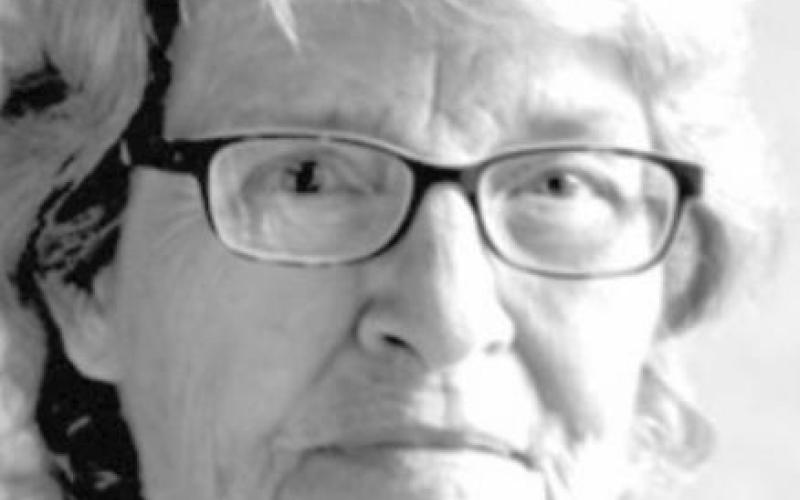Swenson Trial, late 1971
Someone had spooked the two sisters into asking questions about the financial arrangements for their care and that of the ranch, with their brother in failing health. In their suit, the sisters named the president of Citizen’s Bank, Harry C. Logan, also the First National Bank of Abilene, represented by Stanley P. Wilson and the Farmer’s Merchant Bank of DeLeon, as all contributing to the issue of undue influence upon Selmar and the two sisters.
Lawyers lined up to represent the parties in the suit. Representing the two sisters was William G. (Bill) Thompson, Frank Jennings and C. J. O’Connor. As the suit was filed in court in mid-1970, the sisters accused E.R. Maxwell, J.D. Sandefer Jr., H.C. Logan and C. Jack Eden as exerting undue influence on their brother and them in the matter of the ‘Living Trust.’ Eventually, depositions were made by Patrick W. Thompson, Eden and Logan, attorneys for S.T. Swenson. Later, depositions were made by the lawyers for the two sisters, Clara J. and Alma B. Swenson, which included Thompson, Frank Jennings and C. J. O’Connor.
Then, there was a wrench thrown into the whole situation with a document filed by Mrs. Annie Lee Swenson, wife of Selmar Torvald Swenson, that stated that C. J. O’Connor had visited her husband at the rest home and caused him physical and mental anxiety, which led to a serious deterioration of his health. Judge E. H. Griffin of Graham, who was to be the judge for the trial, ordered O’Connor to “desist and refrain from going anywhere near S.T Swenson or communicate with him in any way until circumstances of his health changed.” With that petition, Mrs. Annie L. Swenson became an intervenor into the suit filed by Clara J. and Alma B. Swenson against the museum, H.C. Logan and the presidents of the Abilene and DeLeon Banks. Judge Griffin also ordered that O’Connor “should not undertake to negotiate or compromise the matter with the S.T. Swenson, but should deal only with his counsel.”
The suit would be settled by a jury trial from a pool of 170 residents of Stephens County and eventually included six men and six women. Five jurors were dismissed as they stated that they had already formed an opinion in the case. Those jurors included Frank Home, Mrs. Don Ragland, Mrs. Tommy Gordon, Danny Flatters and Charles Lethco.
The final jury selection included Mrs. R.C. Lockhart, Luther H. Johnson, Velma Sue Ritter, John H. Jackson, J.B. Allen, Hazel Mosely, Mrs. Ruth Hamil, Kenneth Carey, Ruby Kennard, Arthur Viertel, Melvin Glenn and Mrs. Horace Jobe.
The Swenson Civil case was originally scheduled for October, 1971, but was delayed until Monday, Nov. 29, 1971, with Judge E.H. Griffin of Graham presiding over the trial due to a change of venue to the Graham Judge, instead of a Stephens County judge.
Miss Alma Benneta Swenson was the only Swenson to appear in court each day and was accompanied by two cousins who had come from Minnesota. The two cousins included Mrs. Clara Carlson and Arnold Fins Ven, who were brother and sister and had made periodic visits to the Swenson home over the years and were well aware of the land holdings of the Swenson family in the county.
The defendants in this Civil case included the president of the Board of Directors of the museum, J.D. Sandefer Jr.; John Wright, president of the Abilene bank, Harry Logan, president of Citizens Bank in Breckenridge, and Mrs. Annie Lee Swenson, who was representing her husband, Selmar T. Swenson. The defendants were represented by C. Jack Eden, Pat Thompson, J. Edward Johnson of Brownwood and Stanley Wilson of Abilene.
The plaintiffs, in this case, were sisters, Clara Josephine and Alma Benneta Cecilia Swenson, who were represented by William G. ‘Bill’ Thompson, C. J. O’Connor and Frank Jennings of Graham.
According to a previous article in the Breckenridge American, Dec. 5, 1971, Jack Eden gave testimony that “he had helped the three Swenson children write their individual wills in 1967 and was aware of their wishes concerning their money after they died, which included funds to support a historical museum and other investments that would benefit the people of Stephens County.” Additionally, “that money be set aside to maintain the private Swensondale Cemetery, where all the Swensons would be buried.”
Ross Elliott testified, “that he had helped the elder Swenson brother, Selmar T. Swenson, in preparation of an agreement between him and the museum directors acknowledging a gift of money to the Stephens County Museum.” Additionally, Elliott testified that “the eldest Swenson was fully alert and understood all aspects of the agreement concerning the trust part of the will as it was written in 1967.
Next week, will be a final wrap-up of the sensational Swenson Trial and the final disposition for the sisters, Clara Josephine and Alma Benneta Cecilia Swenson. Also, what happens to Selmar Torvald Swenson.
- Log in to post comments


